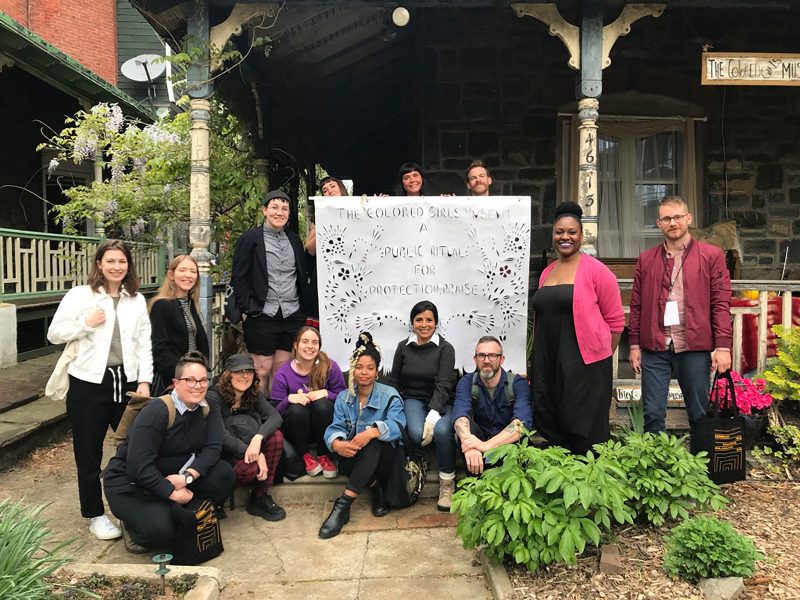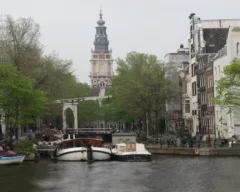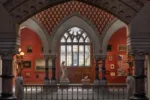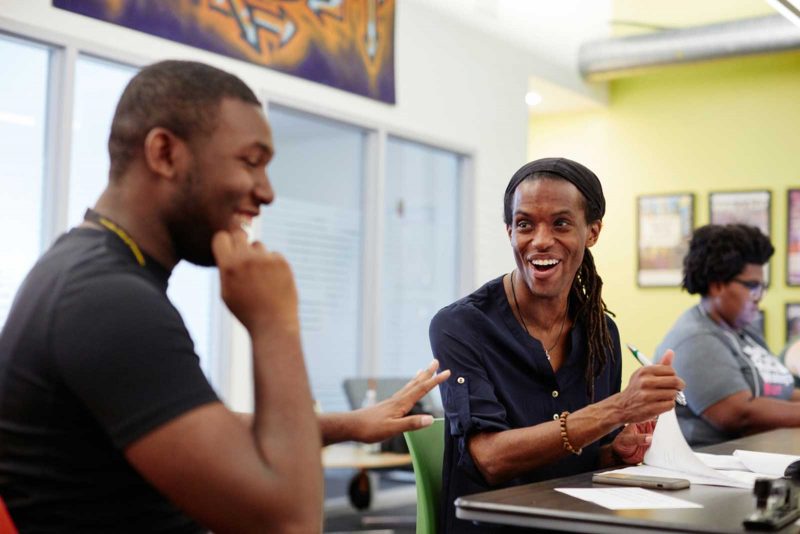
A proposed alternative to the school-to-prison pipeline
Many of us have heard of the school-to-prison pipeline which leaves Black students overrepresented in prisons, and underrepresented in creative spaces, like museums. To address this inequitable situation we must substitute the punitive pipeline with an alternative. I suggest a school-to-museum pipeline as the replacement. Dismantling the school-to-prison pipeline and replacing it with a school-to-museum pipeline offers schools an opportunity to re-imagine their Black students’ trajectories. The school-to-prison pipeline mimics mass incarceration with in-school suspensions and zero tolerance policies; whereas, the school-to-museum pipeline expands Black representation in art classes, museum internships, and employment in the creative economy. Exposure to the arts has been shown to be a valuable tool for inspiring learning, keeping students engaged in the classroom, and becoming more civically involved. To make these benefits more widely accessible to Black students we must increase funding for arts training in K-12 classrooms; unpack the detrimental impact of standardized testing; and enlarge funding for Culturally Specific Organizations that serve disadvantaged Black students.
History of underfunding arts in K-12 public schools
Since the Reagan administration, conservatives have continuously tried to defund the arts under the guise of small government. However, they have persistently resisted shrinking police budgets despite substantial evidence Black students achieve better outcomes when they have exposure to the arts compared to contact with the criminal justice system. The infamous 1994 bi-partisan “Tough On Crime” bill inflated the school-to-prison pipeline by introducing harsher penalties for juveniles. This wrongheaded approach scaled the presence of police in schools despite scant evidence of School Resource Officers (SROs) effectiveness in maintaining ‘safety.’ This in turn created stark racial disparities in how Black and White students’ were disciplined in K-12 school settings. At the same time, the states’ excessive surveillance of Black bodies during school hours adversely impacted Black students’ mental health and well being. The promotion of high stakes testing reduced their motivation and participation in school, challenging the widely held beliefs embedded in the so-called “achievement gap.”
Standardized testing deskilled Black students
The “No Child Left Behind” law in 2002 implemented state-mandated standardized testing and narrowed academic achievement to performance in core subjects: such as reading and math. As a result, penalizing those schools that needed the most help by reducing their enrichment funding — disproportionately affecting schools serving Black, Latino and immigrant students. The divestment from arts programming in working class Black schools helped eliminate: drawing, painting, music, and theatre programs. Thereby, deskilling Black students and depriving them of the introductory training courses necessary to work in the creative economy later as adults. Although the rise of Culturally Specific Organizations was meant to mitigate enrichment gaps in low-income schools, this strategy has proven to be insufficient to overcome racial attitudes at the philanthropic level.
Cultural Specific Organizations are underfunded
Cultural Specific Organizations (CSOs) have typically faced disparities in funding when compared to organizations that serve white people. The 2017 “Not Just Money” report said “this puts under- resourced communities at a great disadvantage in supporting their artists and cultural practices.” Maud Lyon, the former President of the Greater Philadelphia Cultural Alliance said, “historically the cultural sector has always struggled for funding, and this has been even more challenging for Culturally Specific Organizations.” The National Committee for Responsive Philanthropy reported in 2011 “that people of color represented 37 percent of the population, but just 4 percent of all foundation arts funding allocated to groups whose primary mission is to serve communities of color.” Besides insufficient funding, CSOs were recently founded so they do not have the large donor bases required to have solid financial support. This predicament places CSOs at a significant disadvantage during economic downturns, especially the one we are now facing with the covid-19 crisis. Unfortunately, the most vulnerable students are the ones who bear the brunt of these short-sighted decisions to diminish the arts and their life sustaining properties.
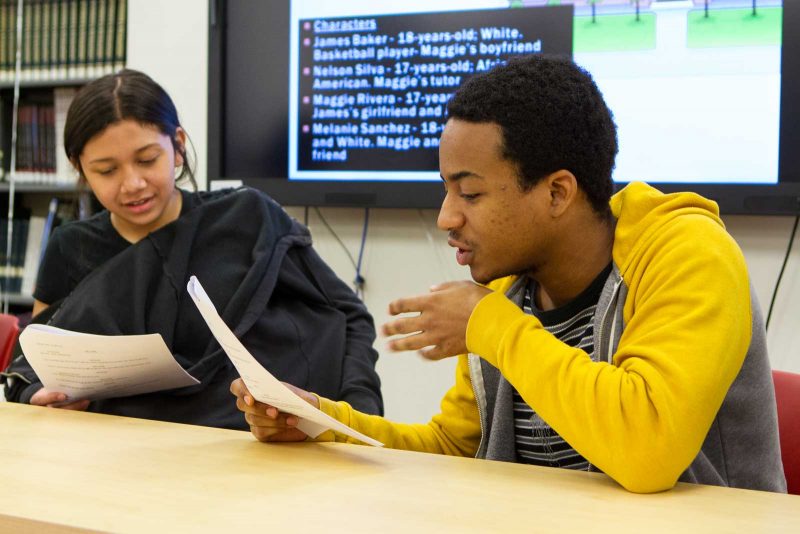
Benefits of Culturally Specific Organizations in public schools
Lisa Nelson-Haynes, Executive Director, Philly Young Playwrights located in Philadelphia said that “PYP’s mission is to improve students’ writing-based literacy skills through the creation and production of theater.” Nelson-Haynes said, “black kids often do not have access to recess in public schools, so sometimes they display disciplinary issues in the classroom.” Public schools located in Black neighborhoods frequently do not have the same financial resources as those found in white ones, so art programming usually suffers as a result. Nevertheless, PYP continues to partner with principals in providing Black students art training and exposure that is not typically offered in their neighborhood schools. One such example, the Colored Girls Museum is a memoir museum which collaborates with PYP to bring to life Black women’s experiences in Philadelphia. Over 85% of PYP participants reported that the program made them feel better about themselves, and are more likely to attend college because of the added engagement.
Proven benefits of museum education for low-level offenders
Re-imagining a school-to-museum pipeline is about creating alternative pathways for Black students instead of the school-to-prison pipeline which wastes taxpayers money and benefits private prisons. Project Reset, a diversionary program in NYC offers an alternative model, and has shown incredible results. “Since 2015, more than 1,750 people have participated in the program, and avoided a criminal record. The program has a 98% completion rate.” The program initially focused on 17-18 year olds, but has since expanded to include older adults who have also touched the criminal justice system. The program partners with the Brooklyn Museum by providing two bi-weekly sessions one for youth up to 25, and another for adults ages 26 and up. The program consists of youth viewing, analyzing, and discussing art. Participants independently create their own work, later culminating as a group exhibition at the museum.
Time to expand the school-to-museum pipeline
In addition to Black students experiencing less exposure to the arts in their schools — Black artists are woefully underrepresented in museums. According to Mona Chalabi, a data journalist with the Guardian, Black artists’ make up only 1.2% of museum collections nationwide. The pandemic leaves us with a rare opportunity to redirect funding from over-resourced police departments to under-resourced Black schools deprived of the arts. The benefits of the school-to-museum pipeline has been shown to: work in wealthier white suburbs; reduce recidivism in juveniles charged with misdemeanors; and positively impact Black students receiving services from Culturally Specific Organizations. More importantly, building a school-to-museum pipeline diverts taxpayers funds from policing to student jobs in the local creative economy. The National Endowment for the Arts (NEA) reported that low-income students who are highly engaged in the arts are twice as likely to graduate college as their peers with no arts education. Hence, a school-to-museum pipeline provides Black students with a concrete alternative to explore their imagined possibilities and future selves. All students do not have to end up in a museum, but they should at least be given the equal chance to access the creative arts economic potential. Therefore, unpacking the mistakes of the past is critical for avoiding another lost generation of Black children to mass incarceration.
